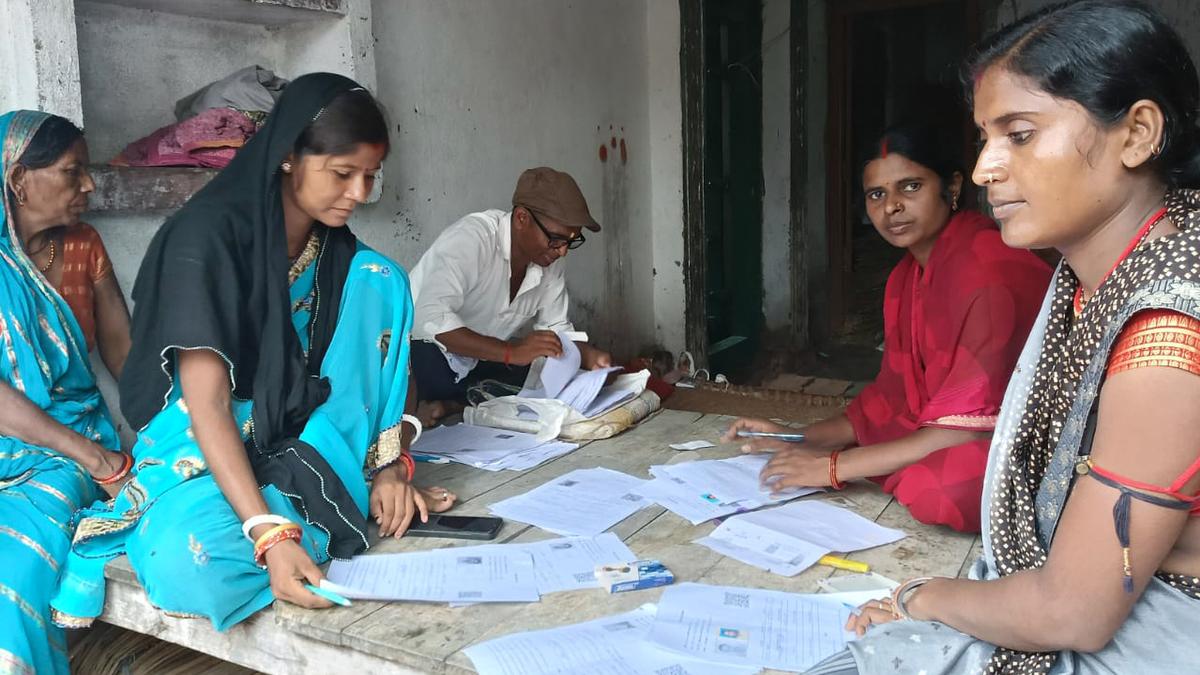
‘Bihar records the highest rate of internal migration in India’
| Photo Credit: ANI
As the Election Commission of India (ECI) nears the completion of the first phase of its Special Intensive Revision of electoral rolls in Bihar (August 1, 2025), there has been a predictable cycle of contestation. Allegations of a disenfranchisement of the poor, minorities and migrants, are saturating political discourse. Opposition leaders have criticised the ECI’s methodology as partisan and exclusionary, framing routine deletions as targeted assaults on vulnerable constituencies. Conversely, supporters of the exercise have invoked the need for sanctity of election rolls and dismissed such accusations as cynical politicking.
Both positions are inadequate and fail to interrogate the structural incongruities of India’s electoral architecture. They conflate fixed notions of “ordinary residence” with an increasingly mobile citizenry and obscure the deeper problem. The law itself is poorly attuned to the socio-economic realities that it purports to govern. The ECI, though institutionally constrained, has been content to administer this dissonance rather than challenge it.
Historical context
The Representation of the People Act, 1950 was drafted in a post-colonial context of largely sedentary populations — over 82% rural and less than 8% migratory at the time. It assumed that most Indians lived and voted where they were born. The assumption has endured despite evidence to the contrary. While present laws privilege fixity as the basis of political membership in a constituency, India’s internal migrants number over 450 million, making up 37% of the population. In Bihar, the proportion is even higher.
Bihar records the highest rate of internal migration in India — 36% of households report at least having one migrant. Over 20% of the working-age population lives outside the State at any given point in time. This distinction is more than semantic. It produces material exclusions. Census 2011 already documented that nearly 13.9 million Biharis lived outside the State. Today, the number is likely to be between 17 million to 18 million.
According to Bihar’s Chief Electoral Office, over 1.2 million names were deleted across the State this year. The majority were removed due to “non-residency” at the time of verification. In districts with high rates of out-migration such as Gopalganj and Sitamarhi, deletions approached 5%-7% of enrolled voters. These are not marginal figures and highlight the structural disenfranchisement of those whose economic precarity necessitates migration.
Two distinct concepts
Much of the public debate collapses two distinct concepts — citizenship and residency. Citizenship, as enshrined in the Constitution and the Citizenship Act, is of juridical status. One is either, or is not, a citizen of the Republic of India. Residency, by contrast, is a contingent and contextual condition, determining the constituency in which a citizen is enrolled to vote. The Representation of the People Act makes residency, not citizenship, the operative criterion for inclusion in a constituency roll. Millions of workers circulate between their natal villages and industrial zones elsewhere, caught in a liminal space — neither fully here nor there. For the migrant subject, disenfranchisement is not merely bureaucratic but existential — a quiet but potent signal of not belonging.
This predicament of legislative inertia is more than the result of administrative indifference. The ECI has inherited this mismatch between law and reality. Its institutional response has been of administrative minimalism — a rigid adherence to procedural compliance that often comes at the cost of substantive inclusion. Neither is impartiality neutrality in the face of structural disadvantage nor is “cleaning up” the rolls synonymous with justice if the very rules of residency systematically exclude certain classes of citizens.
Examples from abroad
Other democracies have confronted similar dilemmas with greater imagination. In the United States, an estimated 30 million-35 million voters reside in States other than their home precincts. Absentee and mail-in ballots allow them to remain registered in their home districts while voting from where they live. The Philippines facilitates absentee voting for its 1.8 million overseas workers — turnout rates exceed 60%. Australia deploys mobile polling stations in remote and transient communities, contributing to over 90% voter participation. These examples demonstrate that the perceived trade-off between roll integrity and inclusiveness is neither inevitable nor necessary. It is a function of institutional design and political will.
The ECI is correct to say that it cannot rewrite the law on its own. But it must aggressively advocate for reform. Its own experience in administering rolls in migrant-heavy States is evidence enough of the need for legislative review. At a minimum, it should pilot alternative models of enrolment and outreach within its existing authority.
Political actors are obviously complicit in perpetuating confusion. They prefer to instrumentalise disenfranchisement as a mobilisation tool rather than invest in educating voters and assisting them through claims and objections processes. Draft rolls are theoretically open to public scrutiny but literacy barriers, poor communication and burdens of migratory livelihoods make such procedural safeguards inaccessible to most. Surveys show that over 60% of voters in Bihar were unaware of the claims and objections window. Among migrants, awareness drops below 25%. Exhorting “voter responsibility” — as much of the official discourse does — risks bordering on victim-blaming.
To defend the ECI is important. But to demand more of it and of ourselves is imperative.
Shubhrastha is a columnist, an author and Founder, The Churn
Published – July 25, 2025 12:08 am IST
